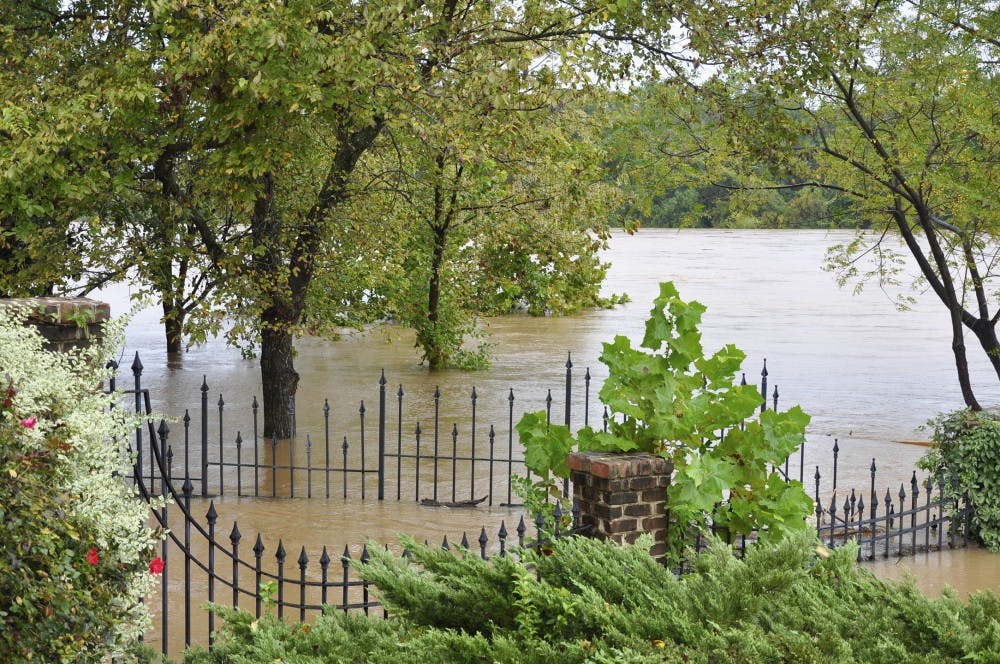Closed interstates, canceled school, failed and monitored dams and record amounts of rain.
This was the aftermath of the 1,000-year historic flood that occurred two years ago, affecting the Carolinas.
Two years later, much of the recovery process is still incomplete. Susan Cutter, Carolina Distinguished professor and director of the Hazards and Vulnerability Institute, is a leading expert on how the Palmetto State continues to move forward.
SC-Floods, a research project at the Hazards and Vulnerability Institute, received a university grant and cameras and other equipment were given to the institute to collect data in small quick response teams.
“The idea behind the quick response is there's data out there that's perishable, like people cleaning out their homes and you wouldn’t be able to see what kind of damage there was. Or there were changes in the river courses and in sedimentation, and people wanted to go out and measure what those changes are,” Cutter said.
Rachel Reeves, a USC graduate and full-time research associate, was part of a quick response team during the flood.
“We went out and we took pictures of those homes and then over time, we kept going back to the same places taking more pictures to see how it was progressing in the recovery process," she said.
One of the most affected areas in Columbia was the Lake Katherine community. They experienced significant damages, according to Cutter, causing people to elevate their houses on the lakeside.
Runoff and damages from the Lake Murray spillway in Irmo, Forest Lakes and Arcadia also contributed to the damages from the flooding in the Columbia area. According to the South Carolina Department of Health and Environmental Control, 51 of the dams in the Columbia area failed, and 75 dams were given emergency orders.
Although not causing a direct safety concern in the area, dam issues continue to inconvenience residents.
“A lot of the dams, they're earthen dams and they had roads on them, so those roads are no longer functioning, and so it means you have to go around the reservoir where before you could cut over the dam to get to A to B,” Cutter said.
She believes one of the main reasons recovery for the Columbia area has been so slow is the struggle to get federal aid money to residents.
“We still see some places two years later where the houses are gutted and nothing is really happening ... So, a lot of people were waiting to see if they would get some resources that way as well, and that’s what slowed, I think, some of the recovery,” Cutter said.
Although much has not been fixed since the 1,000-year flood two years ago, hurricanes and other natural disasters have had longer recovery processes. Parts of Mississippi are still not back to their normalized state since Hurricane Katrina hit the Gulf Coast 12 years ago, according to Cutter and her research.
And as Columbia recognizes the two year anniversary of the 2015 floods, yet another part of the U.S. is beginning the slow process of recovery. According to Cutter, Puerto Rico, after being hit by Category 5 Hurricane Maria, has a long road ahead.
“It’s going to be a completely different place because it was completely decimated. My guess is it will take years, and multiple years, because of the level of destruction,” Cutter said. “And without an awful lot of external resources coming into Puerto Rico, it’s going to be very very difficult and very, very slow.”
According to Cutter and Reeves, protections against floods and hurricane-force storms should be taken by residents, including elevating houses, becoming educated about the risks of your local community and what to do during a disaster.
"If everybody did that, then we'd stand a good stead in having the opportunity to become a little bit more resilient and more self-sufficient,” Cutter said.

